Dear Friends,
K. D. Sethna (25.11.1904 — 29.6.2011) was a Parsi sadhak who joined Sri Aurobindo Ashram at the age of twenty-three in December 1927. He was a noted poet, author, scholar and cultural critic whose published works include more than fifty titles. In 1930 he received the name of Amal Kiran from Sri Aurobindo. He was the editor of the monthly magazine Mother India from the time of its inception in 1949. Some of his notable books are The Secret Splendour, The Poetic Genius of Sri Aurobindo, The Adventure of the Apocalypse, The Passing of Sri Aurobindo: Its Inner Significance and Consequence, The Indian Spirit and the World’s Future, Sri Aurobindo on Shakespeare, The Vision and Work of Sri Aurobindo, Sri Aurobindo—The Poet, Altar and Flame, The Mother: Past-Present-Future, The Problem of Aryan Origin: From an Indian Point of View, Ancient India in a New Light, The Spirituality of the Future: A Search Apropos of R.C. Zaehner’s Study in Sri Aurobindo and Teilhard de Chardin, Aspects of Sri Aurobindo, The Beginning of History for Israel, The Inspiration of Paradise Lost, Problems of Early Christianity, Problems of Ancient India, Our Light and Delight: Recollections of Life with the Mother, Science, Materialism, Mysticism: A Scrutiny of Scientific Thought and The Development of Sri Aurobindo’s Spiritual Thought and the Mother’s Contribution to it.
25 November 2022 marks the 118th Birth Anniversary of K. D. Sethna. On this special occasion, we are publishing some of his tributes paid to his fellow-disciples namely Nolini Kanta Gupta (1889-1984), Keshav Dev Poddar alias Navajata (1922-1983), Krishnalal Bhatt (1905-1990), Sahana Devi (1897-1990), Dyuman (1903-1992), Madhav P. Pandit (1918-1992), Ambalal Patel alias Ambu (1909-1993), Fritz Winkelstroeter alias Medhananda (1908-1994) and Daulat R. Mistry alias Lalita (1906-1985).
With warm regards,
Anurag Banerjee
Founder,
Overman Foundation.
*
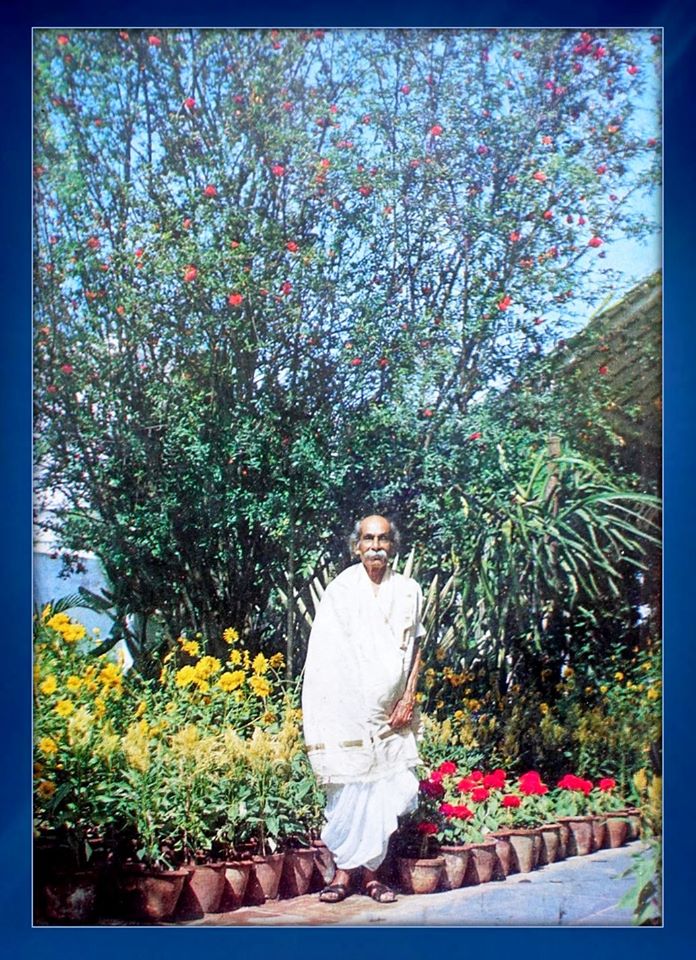
Nolini Kanta Gupta
With the passing away of Nolini Kanta Gupta at 4.42 p.m. on February 7 [1984] something precious in our world of time ceased to pass away: a life of profound spiritual moments reached at the age of ninety-five its grand total and, becoming a rounded whole, grew a permanent part of history.
Regarded by all who knew him as the disciple whom Sri Aurobindo and the Mother had considered the closest to themselves in many respects and had appointed their Ashram’s Secretary from almost the very beginning, Nolini lived lately with a quiet inwardness making no display of the richness of its contents yet effortlessly pervading the Ashram’s atmosphere. After Sri Aurobindo and the Mother had departed, his personality helped much to sustain the manifold activities which the two great Initiators had set in motion to realise more and more their vision of a new creation on earth rather than a gradual preparation for freeing the soul into some beatific Beyond.
Not that this Beyond was ever out of cognisance in the Aurobindonian Yoga that Nolini followed. Indeed the uttermost of it was the goal, what the Master called Supermind, the ultimate Divine Dynamism that not only has manifested the world but also holds the secret of the world’s divinisation through an evolutionary process. To attain the Supermind yet not merely to rest in its luminosities was the spiritual path originated by Sri Aurobindo and the Mother: the aim always was to bring that supreme perfection down into the terms of mind, life-force and even body.
Faithful to his Guru’s demand, Nolini worked indefatigably towards the spiritual heights and sought to express them here below. It is notable that during the last months of his life he who was never given to much self-disclosure let escape a few words which afforded a sign that he was working from a level which Sri Aurobindo had described as nearer to the Supermind than any other. On one of his daily visits to Nolini’s room, Nirodbaran ventured the question among the attendants present there: “Where is Nolini-da’s consciousness these days?” Unexpectedly Nolini himself looked up and said: “Why, with the Mother.” Nirodbaran pushed the inquiry further: “But where exactly?” Nolini answered: “In the Overmind.” Although startling in its precision, this was not quite a surprise in its general drift, for all around him had been feeling that throughout the preceding months some unusual inner power had been accompanying the vicissitudes of his illness: a glow seemed to emanate from his face and there was a calm confidence in his dealings with troubled souls as though he had been graced with a new right of guidance.
Whoever was sensitive to spiritual influence could feel the presence of this power and this grace all about Nolini as his body lay in the immobility of death but diffused a most living and energising peace. A steady pressure from above one’s head brought the experience of a creative immensity urging us with its blessing towards a greater life and towards the fulfilment of Sri Aurobindo’s dream of the Ashram as a collective passage to a golden future.
Nolini’s true being is still with us and secretly continues here to serve the Divine who had a double incarnation amongst us, mastering our unregenerate human nature and mothering the evolving godhead in each sincere aspirant. Many memories surge up in me as I look back over the years since I first met Nolini in December 1927. His high forehead, his serious eyes which yet knew how to twinkle, his frequently raised eyebrows not indicating any disapproval but silently signaling his attempt to keep his mind uplifted, his full hanging moustache reminiscent of the Nietzsche who had first invoked, however faultily, the unborn Superman — none of these features changed through the decades. Although occasionally brusque in manner and speech, he had often a tender understanding of people, especially young ones. And I remember the Mother saying that she had never heard him speak ill of anybody to her. Another trait I observed was one to which Champaklal once drew attention. The Mother would at times ask Nolini what he had to say on this or that problem which had arisen or to make a pronouncement on some point needing elucidation. He would maintain a grave face as if giving thought to her question, but not a syllable escaped his lips. It was a scene of respectful silence appealing to her to frame the decisive word. Anything he spoke might come in the way of the plenary light she could shed. Anybody else would have been flattered into speech by the Mother’s gesture as of consultation. Not so Nolini in the least. The result was that the Mother’s own deliverance of all-clarifying judgment. When, however, the matter was of a technical literary import, as happened now and then in the Mother’s French-translation class, he would respond with alacrity on hearing, after she had stated the uncertainty, the sweet trustful call: “Nolini?” Time and again, the Mother would send us to his room to get advice on a practical point concerning the aptness of one course of action or another in relation to Sri Aurobindo’s writings.
There is no doubt that though she was aware of human shortcomings even in the best of us, the Mother, in tune with Sri Aurobindo, had a very high opinion of Nolini as a practitioner of their Yoga as well as in his role of an evolved mental being. Still, this did not imply that she meant him to be her successor in any radical sense. Nobody could be an authentic successor to the Avatars of the hitherto-unrevealed Supermind. As things have stood, none can serve as a third Guru in the domain of so rare a reach of Divine Consciousness. Neither did Nolini ever claim to be such. But nobody deserved as richly as he to be a potent helper on the way, the exemplar of a lofty spiritual detachment which could yet be the door-opener of a treasure-house of inner knowledge and prove a warm-hearted brother at once unobtrusive, sympathetic, elevating. He has also figured admirably as a guardian of the Ashram by his wide reputation for deep mystical experience and a many-sided wisdom, a guardian alive to the need of this seat of Sri Aurobindo’s and the Mother’s unique experiment in the reshaping of man to be left free to proceed on its own inspiration with the light caught from the founders of its Yoga of Supramental Descent and Transformation. Well may we set up for ourselves, as those founders’ co-disciples with the illumined soul that has left its body, the ideal of being as Nolini-like as possible.
(March 1984)
*
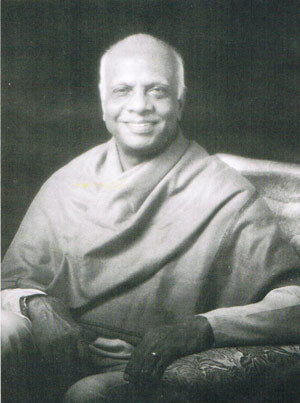
Navajata
Navajata passed away on the morning of 19 January at the age of 61. The name which he bore signifies “One who is new-born”. It was given to Keshav Deo Poddar by the Mother when he decided to put himself and all who were of the same mind as he in his family—which meant the whole of it—at her feet.
His had been a life of manifold activity in business. When hardly in his mid-twenties, he was made the head of a corporation of investors with the power to sign at a pinch a cheque of two crores. From the midst of such responsibilities, which carried also dangers, he came to the Sri Aurobindo Ashram for permanent settlement in the peaceful atmosphere of the Mother’s presence. It was for him not a change from work to rest: it was the beginning of still more expansive work than before but one which took shape against a background of self-dedication to the mighty cause of the Mother. This new poise evoked from her the deeply suggestive name with which she blessed him. And in its wake he proved again and again a source of plenty to the Ashram’s life.
Not that his devotion to her started only when he became an inmate of the Ashram. He had been visiting it ever since he was a boy. His father Ramnarayan used to bring him along year after year and he has known numerous darshans of Sri Aurobindo.
Before Sri Aurobindo left his body, Navajata had already conceived the idea of a journal which would look at all world-problems from the height of the Master’s vision. Both the Master and the Mother approved of the idea and, when he proposed the name of K. D. Sethna (Amal Kiran in the Ashram) for editor, they concurred. On 21 February 1949, a birthday of the Mother, the journal was launched as a fortnightly under the caption Mother India. In 1952, this Review of Culture, which Sri Aurobindo once called “my paper”, turned into a monthly.
Navajata’s next venture was the founding of the Sri Aurobindo Society. With the Mother’s full assent it was intended both to bring extensive financial help to the Ashram and to propagate the teaching of Sri Aurobindo throughout the world. What it fundamentally stood for is clearly expressed by the Mother in the Message she gave on 2 May 1971 for it and for a sister organization:
Sri Aurobindo’s Action
and
Sri Aurobindo Society
are equally working for the manifestation of the truth in the immediate future; and to help both equally is to work for this realisation.
And my blessings are with all help and good will.
The most far-reaching experiment with which Navajata was linked arose out of the functioning of the Sri Aurobindo Society. In a long talk of the Mother published several years back… it was disclosed by her that from her early life she had wanted to establish an international city for World Unity on a spiritual basis, but that this scheme had remained unactualised for want of material support. She recounts how she mentioned it to Navajata and he at once came forward to bring the support needed. The Mother accepted his offer, for she knew that nobody in her circle could match the genius he possessed for bringing financial aid. Thus “Auroville, the City of Dawn”, took birth on 28 February 1968 with a ceremony attended by representatives of a score of nations.
It can be said without exaggeration that there would have been no land for Auroville without Navajata’s service for the Mother’s vision, land bought with the Mother’s consent in the Sri Aurobindo Society’s name for the benefit of humanity. Whatever the problems that cropped up in the course of the years as a result of divergent views or interests and whatever the present state of the Dawn-City, its name will ever be associated with him whose dynamic zeal and collection of super-abundant funds under the Mother’s inspiration made it possible. The Mother’s wish to render her Dawn-City an internationally known and encouraged entity was also fulfilled when Navajata put Auroville with her help on the world-map by making its project a part of the ideals of UNESCO.
Every eminent worker in any field is bound to meet with criticism in one respect or another—criticism at times valid and at times illegitimate. But, in this world of difficulties and of human ignorance aspiring towards divine knowledge we have to rise above natural shortcomings and look at the shining positive achievements and look at the shining positive achievements the Mother has brought into view through one in whom she achieved the profound fact of being “new-born”.
(February 1983)
*
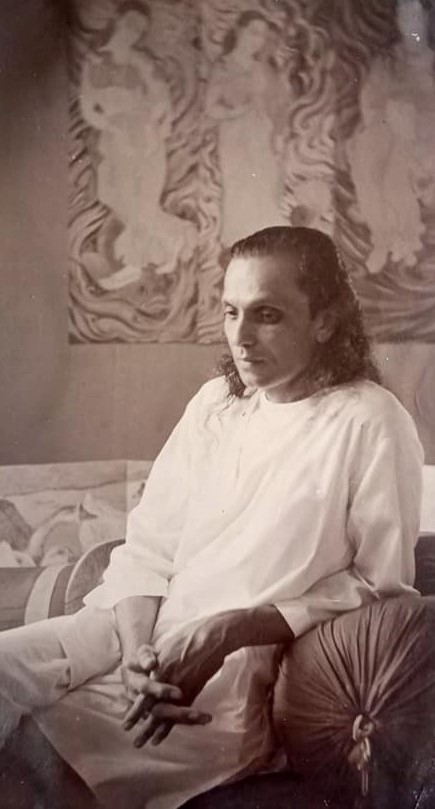
Krishnalal Bhatt
Krishnalal Bhatt who had been a member of the Sri Aurobindo Ashram since 1934 passed away at 2.10 p.m. on January 1990. He was 84.
Krishnalal studied painting at Santiniketan during 1932-33 and came to Pondicherry in 1933 to live in the Ashram. About 500 original paintings of his are in the Ashram Studio. He was honoured with the Gujarat State Award for art in 1976.
A delicacy of touch, coupled with a subtlety of vision, made one critic think of something Raphaelesque in general in Krishnalal’s creations, especially when his gentle face and devoted manner were seen along with them.
It was a personal characteristic of him not to show his difficulties nor allow people to take trouble over his needs and his frequently poor health.
(February 1990)
*
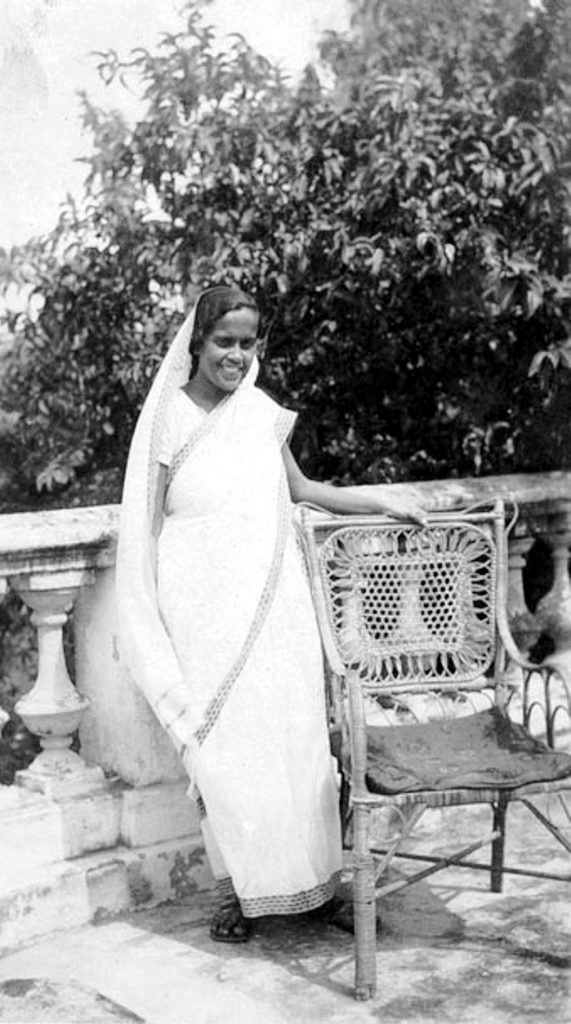
Sahana Devi
Sahana, aged almost 93, passed away on 6 April after her dinner.
A singer with an extremely clear and sweet voice, once companion in musical soirées to the celebrated Dilip Kumar Roy, she joined the Ashram along with him in 1928.
The letters of Sri Aurobindo and the Mother to her are evidence of her spiritual progress as well as to her deep intimacy with them. In her last days her body gave her a lot of trouble. Several times she told my friend Minna when the latter visited the Sewing Department: “Tell Amal that I feel fine within. Only my body is broken.”
Three days before her death she came, helped by Vishwabandhu, to the Samadhi in the afternoon after months of absence. She met me there and said: “Amal, I have come only to see you. You have so often inquired after my health.” Then she did her fervent pranam to the Samadhi, walked back towards me and sat on a nearby stool for a while. Evidently this was at her soul’s prompting the finale to the story of a long and happy relationship. Nirodbaran who too had been closely connected with her came out of his room to greet her.
In the old days I used to teach her English. I recommended Matthew Arnold as a model for reading. Sri Aurobindo fully approved the choice. Recently, after deciphering Sri Aurobindo’s notes written to her over the years, often with a faint pencil, I had the pleasure of editing the last two books she published before her exit from her beloved Ashram.
With her goes one of the last of the Old Guard now. Now I believe only four from the very earliest period remain, the youngest of them eighty-five years and four months old.
(May 1990)
*
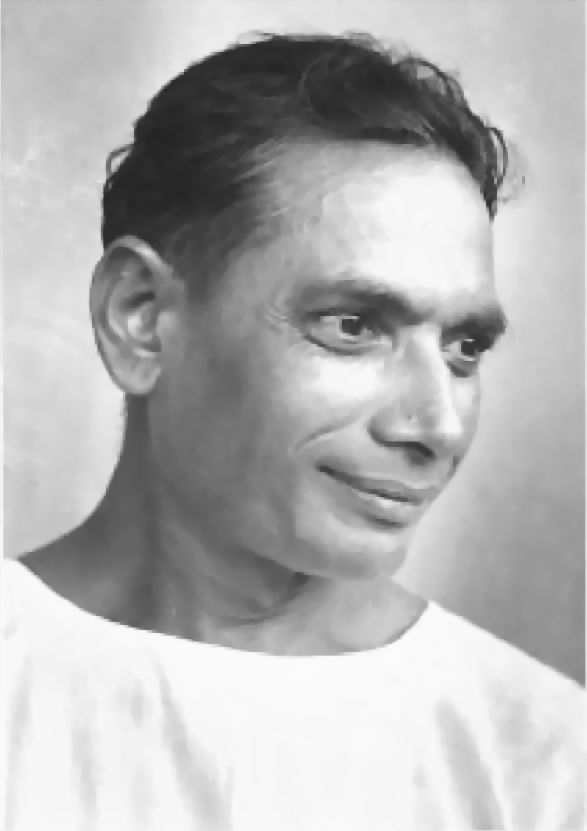
Looking Back at Dyuman
In the middle of last year—1991—Dyuman came to my room for a chat. We remembered old times. He said “Now you and I are the only two persons who can speak of the earliest phase of the Ashram I came to the Ashram in May 1927 and you in December the same year. Nobody alive except Champaklal came earlier. But Champaklal can’t speak now So we two alone can report about the old days.”
I reminded him of the meetings the Mother used to have with some of the disciples in the years just following 1927 in the “Prosperity” room in the Library House They would be before the Soup Distribution downstairs in what is now the Reception Room Both Dyuman and I belonged to that group. Most of us sat in a semicircle in front of the Mother. The Mother often gave talks and 1 jotted them down in abbreviated long-hand and afterwards reconstructed them and read them out to her during my interviews. At other times games were played to develop our intuitive powers There was also informal chit-chat with the Mother Once she raised the question “Who among you has progressed the most during the past year?”
The answer would not mean which sadhak or sadhika was the most advanced in general. It would declare which one had taken the most marked step forward during the preceding twelve months.
While recollecting this question I turned to Dyuman and asked him whether it had stuck in his memory too He said: “Yes.” Then I asked him whether he recalled the answer. He looked at me but kept quiet. I smiled and said: “We thought of Nolini, Amrita, Champaklal, Pavitra and Anilbaran, all old-timers. But the Mother named you.” Dyuman’s face beamed and he exclaimed. “So you remember this?” I replied: “Who could forget so great a compliment?” He looked very happy.
Now, what could have been the progress which marked him out. The central clue lies in the words the Mother once wrote in a letter to a disciple. “Dyuman loves me very dearly.” The expression implies an extreme movement of the deep heart—the constant outflow of what Sri Aurobindo and the Mother call the psychic being, the true soul which is a scintilla of the Divine and has a spontaneous leap of self-surrender to its luminous source A rapt devotion for the Supreme stream8 out from it at all hours and everything one does is offered at the feet of the Lord and His manifesting Power,
Mother of the universe, / Creatrix, the Eternal’s artist bride
But the soul does not merely live in an enchanted garden away from the noises and hurdles of ordinary life. It sallies forth to carry out the Will of the Inmost
Beloved and that was another characteristic of Dyuman who held the Mother so infinitely dear. His love was such that he would obey her slightest wish and go all out to give her the best of everything. “Yes, Mother,” was the most frequent utterance from his lips, and just as frequent was the phrase: “You will have it.” I have witnessed occasions when he would report to her some project he had started on her behalf. But the moment she showed the slightest sign of hesitation he would immediately shelve it. Never was there any argument And always he would seek out ways and means to secure for her the best the world could give. For instance, it was the sweet child-heart in him that dreamed of seeing the Mother move about like a queen in a Rolls-Royce! The dream was never realised—perhaps because the Mother retired to her second-floor rooms in April 1962 and it seemed she would never come down. As I said in my short notice that was pushed into the September Mother India at the last minute, the Mother called him “The Perfect Worker.” I think it was on one of his birthdays that I heard this rare compliment come from her mouth.
As a worker he was not only most obedient and scrupulous: he was also unsparing of his own energies. He often over-exerted himself On the most recent darshan day—August 15—he used every ounce of his strength and stamina to distribute for hours on end the Darshan Message. The very next day he ran a high temperature—and two days later he passed away in the Ashram’s Nursing Home as the result of a sudden heart-attack
His inner contact with the Mother was such that he could draw her out of the deepest trance if she was required for some purpose. This I was told by Udar in connection with the last hours of Sri Aurobindo. The Mother had gone away to rest some time before the end was expected, so that Sri Aurobindo might have a passage free of the Mother’s constant inevitable impulse to prevent him from his contemplated self-sacrifice to effect a radical step forward for the earth-consciousness. Dyuman was sent to call her inwardly out of her trance into which she had gone in the interval between her leaving Sri Aurobindo’s side and his taking his last breath. Without a whisper or a touch he is said to have informed her of the need to go back to Sri Aurobindo’s room.
That room—before the accident to the Master’s right leg on the night of November 23, l938 was the scene of a sacred seclusion Away from physical contacts Sri Aurobindo wanted to practise his dynamic meditation to hasten the descent of the Supermind. Once I saw his silhouette behind the open shutters of the outermost room on the first floor, as he was waiting for the Mother’s return through the courtyard of the house after the nightly Soup Distribution. The next day I spoke with happiness to the Mother of having caught a glimpse of the glorious body that was on the way to transformation. She looked grave and told me it would be best if no one did what Sri Aurobindo did not want—namely, to see him. Like Champaklal and one or two others, Dyuman had to go to the Lord’s room for some practical reason. But, knowing the Mother’s wish, he most conscientiously avoided casting the least glance on that most worshippable form. Absolute obedience, no less than utter love and whole-hearted service, was a marked characteristic of the unpretentious dedicated soul who left his slender … physical sheath to join his adored ones on August 19 this year.
(November 1992)
*
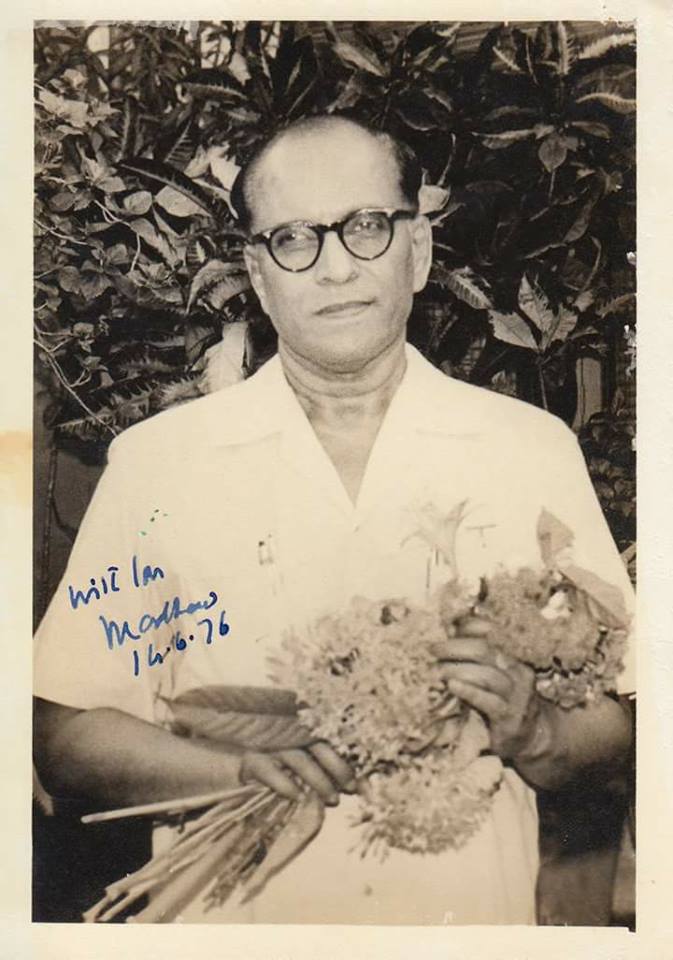
Madhav Pandit Passes Away
When I went for a last look at the body of my friend Madhav Pandit, who had passed away on March 14 at the age of 75, I could not help putting my hand upon his forehead at the moment I arrived by his side and again at the moment I left it. At this touch of affection, happy memories surged up.
What I most remembered in general about Madhav was his combination of spiritual self-discipline, wide mental scope, spontaneous non-ritualistic devotion to Sri Aurobindo and the Mother, varied learning and yet humble desire to be taught, warm cheerful temperament and laughing superiority to adverse circumstance.
He who had made a detailed study of the ancient scriptures was still quite ready to admit a mistake and seek correction from an unscholarly dabbler in scriptural lore. While hundreds regarded him as the last word on subtle problems he would time and again want a confirmation or correction from one who was a tyro in comparison. Then there was his sympathy and quick response and happy trust. I vividly remember an incident many years ago. I was living on my own means at the time. Finding myself in financial straits I sought a loan from him. He readily agreed to a series of advances month after month from a book-printing organization he had formed. I wrote out a grateful receipt of the first installment and gave it to him. Instantly he tore it to bits and threw it into the waste-paper basket. I caught hold of his hands affectionately and have never forgotten this gesture of absolute faith on his part.
His helpfulness to fellow-sadhaks, even to those whom others regarded as small fry, could always be counted on. He would do all he could to make their way smoother. There was also his friendly turn towards souls in difficulty or uncertainty. Pitted against powerful presences, they would depend on him to slip to them some private information which would enable them to come up fighting when a cause seemed forlorn.
Certain ways of his which smacked of “guruship” were balanced by the utterly unassuming attitude he had towards his so-called “disciples” upon non-formal occasions. He considered those ways to be in consonance with the traditional Indian mind which practised feet-touching and blessing-receiving wherever a higher consciousness was felt to be present. I was sure that inwardly he passed on to his Gurus whatever act of reverence was done towards him and there was the plausible argument that if the act was not sought for but allowed because it was a psychological aid to the doer, there could be no harm. On hearing this argument I wrote an article which, among other things, tried to show that in the long run the act could harm both the doer and the receiver. Naturally I sent the typescript to Madhav, asking him whether it could be published in Mother India. His prompt reply was: “Why not?” So the piece went to press, but when it was in the galley state I found that a party wanted to make use of it as the main tool of a campaign of denigration of Madhav. At once I withdrew it lest it should serve in malicious hands to make one debatable aspect loom unduly large of a person who had many admirable sides to his character and who in his private personal relationships never put on airs.
I may also glance at Madhav’s extreme orderliness of method and efficiency of execution. The Mother had full confidence in his assessment of a situation and in his management of it. If accounts kept by him and by other agents differed, she would give preference to his. Along with meticulous method went his phenomenal memory for small items like people’s addresses. Everything was in its proper place both in his mind and in his daily life. But I never found anything rigid in his manner. He was always ready to change according to the need of the moment.
Now a word about his literary activity. He was an accomplished impressive speaker, very much in demand. Nobody in the Ashram has written so many books of lucid direct exposition of the Master’s and the Mother’s teachings. Nor has anybody done as many extensions of these teachings to touch problems theoretical or practical of sadhana. Not that one could always agree with all his pronouncements, but there was seldom any pronouncement which did not open up some vista which would lead one to make some discovery of one’s own.
Here was an enterprising adventurous mind looking in diverse directions—and behind it one felt a questing soul ever remembering the glory it had seen and loved and obeyed: Sri Aurobindo’s vast-visioned wisdom and the Mother’s deeply insightful care and creativity.
(April 1993)
*
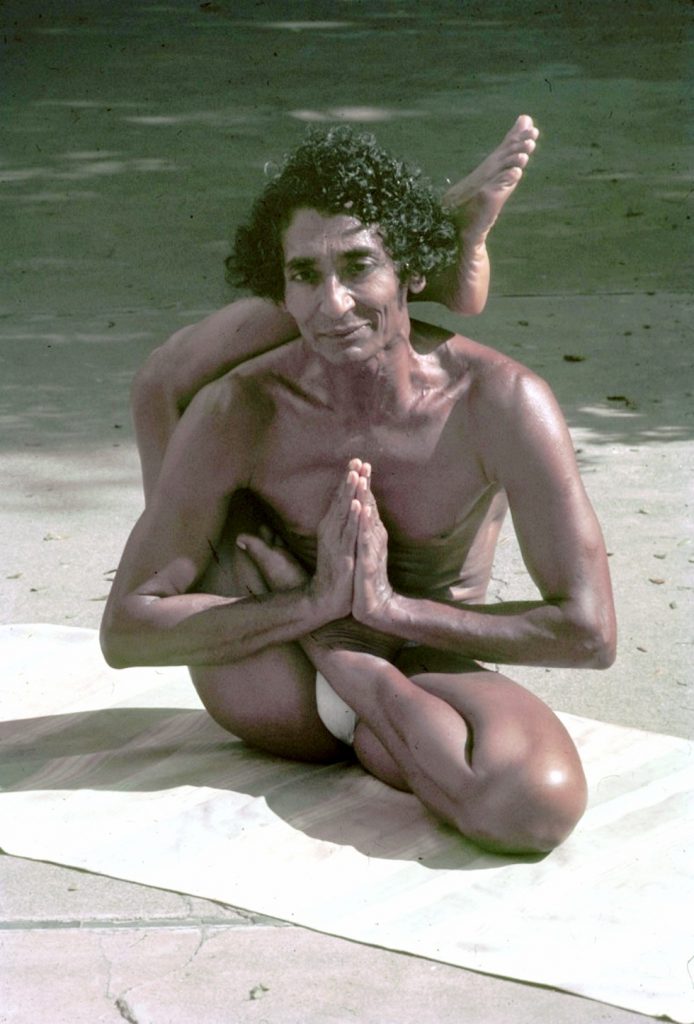
Tribute To An Old Comrade
In the last of the six talks I gave from August 26, 1970 to October 20, 1971, at our International Centre of Education, which along with two by Nirodbaran have been published under the significant title Light and Laughter, I spoke in a personal vein at one point. I briefly discharged a debt of gratitude. The words I used are very apt in view of the event which took place in the morning of April 18 this year [1993]. Let me quote them for the benefit of those who were not a part of my audience and who are unlikely to know much about the early years of life in the Ashram, especially the ‘thirties’. I came to my subject in a somewhat indirect though not irrelevant way. I said:
“In sadhana the place of the mind is not only at the feet of Sri Aurobindo and the Mother: it is also between the pages of their books. The only thing to take care about is that you should not grow intellectually overactive. Otherwise you start analysing yourself all the time and that is hardly conducive to the Supermind’s coming or even to less spectacular progress. There’s one chap in the Ashram I know who has never sat in judgment on his own sadhana or indulged in nagging self-analysis. And he has been perhaps one of the happiest here. Though not an intellectual, he is quite bright and intelligent, yet he has never worried to find out whether he was progressing or not. Most of you know him. Apart from his service to the Mother, he is now best known as a teacher of Hathayogic Asanas, but formerly he was most notable as one of the two closest friends of Amal, the other having been Premanand, the first librarian the Ashram had. Yes, I mean Ambu — our energetic, outspoken, humbug-proof, loyal-natured Ambu.
“In the old days he had a somewhat foppish air, but there was no effeminacy in him and, though he looked a little weak, he had a lot of courage. And I may say from repeated experience that he has a rare capacity of giving unstinted service. He has been of immense help to me, he has nursed me through illnesses and permitted me to be as incompetent as I liked. Thanks to him, I was able even to keep a stove and use it — I mean he managed it and I enjoyed its benefits. I am not very good at housekeeping and, though my incompetence may not match that of Dilip Kumar Roy who once told me that if he had to dust his own furniture every day he would prefer to commit suicide, I have been pretty much of a dud in domestic science. I used always to think in the old days that Ambu had the qualities of an ideal wife. Good job he was not born a woman, because husbands are not often ideal, and a husband having such a wife would never have let her go to become a Yogini. Ambu has become a Yogi — but what distinguishes him is that he has kept all bothering about Yoga out of his life: he has let the Mother do the bothering. He has cared only to serve her. When you keep thinking of her instead of your own progress you find the secret of happiness. As a result, I don’t believe Ambu was ever depressed. I have seen him sickly-faced at times, I have seen him a little sad too on occasion, but never depressed. And that is an excellent way of living. For, with depression there comes a lot of Yogic upset. Unfortunately there are such a lot of people here who are depressed that I would say a sort of caste-system has sprung up with a large section which can be called the Depressed Class. We also know that depressions are always followed by inner havocs — storms in sadhana, psychological counterparts of the cyclones that time and again sweep over Pondicherry. And you may have read in the newspapers how these cyclones develop: we are told they develop because of some depression in the Bay of Bengal.”
Have I anything to add to this vignette with its trailing off lightly into a generality? The active Ambu I had known came to a sorry pass: he got afflicted with Parkinson’s Disease. But there was no depression still and the faith in the Mother’s Grace remained an inner steadying truth. Right up to the end he persisted in paying daily visits with friendly help to the first floor of the Ashram’s main building where in the days of his prime he used to take for the Mother the food cooked specially for her by three sadhikas. I may mention that he had an artistic side to him. His room is a regular museum of rare shells, strange stones and other fantasies of Nature. I am told that we owe to him one of the series called Mantras of the Mother. The Mother asked him to write for her a daily sentence in English. He countered by praying to her to do the same for him. Thus a valuable little book got compiled.
I have noted and praised Ambu’s close association with me. As close was his connection with Udar and his family. With great devotion he practically supervised, along with Udar and his wife Mona, their baby daughter Gauri’s growing up into a pretty girl and woman. She knew him as “Uncle Ambu”. He had a genius for selfless affectionate relationship. A warm bond he had formed also with the poet Harindranath Chattopadhyaya during his two-year stay in the Ashram. I remember too how effortlessly he had mixed with Arjava (John Chadwick) who was not always a very easy person to get on with. Arjava had even made Ambu learn by heart a couple of his poems.
Ambu joined the Ashram in 1928, less than a year after I did. So too did Meenakshi, the nonagenarian sadhika whose smiling presence is yet with us. So he was the second earliest Ashramite surviving. Behari, who expired a few days earlier than Ambu, was the third, with his arrival in 1929. Shanti Doshi whose death shortly preceded Behari’s was the fourth earliest, having joined the Ashram in 1930, at the age of a mere 13. Nirodbaran, whom we are happy to have still amongst us, stands fifth with 1932 to his credit.
(June 1993)
*
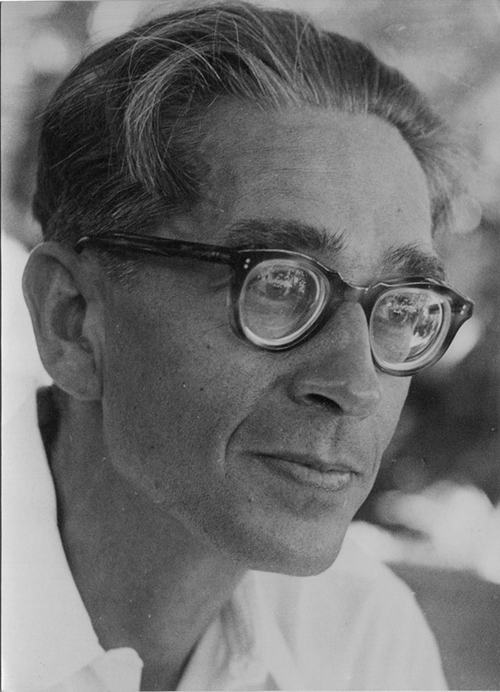
Medhananda
Medhananda left his body on May 26th, 1994, just under 3 months after his 86th birthday. Born in Germany on February 28, 1908, he was educated as a lawyer, but left his country during the Nazi ascendance in the 1930s. He settled in Tahiti, spending many months in solitude on a remote island where he had many profound experiences. After he joined the Ashram in 1952 the Mother gave him his name, meaning “Bliss in the Mind”, and put him in charge of the Sri Aurobindo Ashram Library. His wide and profound culture, originality of vision and trenchant humour of expression have been a source of delight and illumination to many, perhaps reaching their widest audience through his many-sided contributions to the journal “=1”. In recent years he was exploring the psychological symbolism of Egyptian hieroglyphs in the light of Sri Aurobindo’s vision.
(August 1994)
*
Lalita
Lalita, born on January 3. 1906, breathed her last at 4. 25 p.m. on December 3, 1985 at the Sri Aurobindo Ashram Nursing Home where she had been removed nearly a month earlier after a severe attack of cardiac asthma. She was brought to her own room soon after she had passed away, and taken 24 hours later for burial in the Ashram garden “Casanove”.
On December 4, as she lay in her bed, all who came for a last look at her were struck with the expression on her face. Peace we expect in death, but here was an extra-ordinary beauty added to it, as if a subtle depth of unearthly happiness were softly radiating out to shape every line and curve to a rare delicacy. “I have reached home, the Divine Mother’s arms are around me”: this was the mute message which seemed to be conveyed. The atmosphere about her could be felt vibrant with the presence of the inmost soul, through which the large photograph of the Mother on the piano behind the bed became a living Power granting the boon of a new spiritual life to whoever could respond to the mystic moments that were passing.
At the age of 21, Lalita, née Daulat R. Mistry, a fair, dark-haired, doll-like figure, came to the Ashram on December 16, 1927 with her husband at the time, K.D. Sethna (afterwards named Amal Kiran by Sri Aurobindo). They were the first Parsis to enter the life of the Integral Yoga. From the beginning Sri Aurobindo and the Mother saw intense spiritual possibilities in young Daulat. A few days after her arrival she offered all her rich saris and every piece of her jewellery to the Mother. Her self-dedication to the Divine was immediate and whole-hearted.
Very soon the Mother took her up for personal work and attendance. Sri Aurobindo gave her the name “Lalita”, explaining: “Beauty of refinement and harmony—this is the idea underlying this word. It is a name also of one of the companions of Radha.” Daulat became indeed a companion of the Mother whom all members of the Ashram took to be inwardly to Sri Aurobindo what Radha had been to Sri Krishna.
A pioneer sadhak, Amrita, in close contact with the Mother, once remarked to Amal Kiran: “Lalita is a part of the Mother.” The Mother herself told Amal on one occasion: “Lalita has the nature of the saints.” This, of course, does not certify an utter transcendence of the common human stuff—and Lalita repeatedly spoke to Amal of her own weaknesses and shortcomings and aspired for her Gurus’ Grace to overcome them. What the Mother’s comment assures is the never-obscured and ultimately triumphant “psychic being” in the midst of all defects, difficulties, setbacks. And that is what we saw in Lalita not only in her young days but also in her old age when, after a protracted absence, she returned to the Ashram on the death of her husband M.B. Panday. The Ashram gave her a warm welcome, knowing how generous she had been in her relation with it throughout the years. In her turn she never ceased to appreciate its generosity to her. However, her later period was no smooth run. Various infirmities were her lot and many a trying circumstance had to be met. But she passed through everything with quiet patience and never faltered in her faith in the Mother and in Sri Aurobindo whom she always called “my sweet Lord”.
In her early days she was skilful at embroidery and at making artistic boxes for the Mother. Up to the last she remained a gifted musician and a keen admirer of painting and literature as well as an adroit story-writer and an eager pursuer of knowledge in several fields. A distinguishing trait in her nature was a deep love for animals. But, above all, she had the heart of a child of the Divine, with no pretensions, no personal ambitions, no rancours against anybody. What she prized most was the inner touch of the Supreme on her life and the vision she had time and again of spiritual and occult realities. A source of great satisfaction to her was the memory not only of the physical intimacy she had long enjoyed with the Mother in the past but also of the numerous occasions when, during her work in the Mother’s apartment near Sri Aurobindo’s room, Sri Aurobindo used to come out and talk with the Mother and often look intently at the young assistant who would stand in rapt amazement at the Master’s majesty and compassion.
It is worth noting that in her last piece of writing (Mother India, December 1985, p.824). she recorded a vivid dream-vision of Sri Aurobindo and at the same time a symbolic experience of her inmost being as a shining entity quite separate from her body.
Lalita will be missed very much by the circle of friends who had cherished her and in whom she had full confidence. Many others will also remember seeing her in her wheel-chair opposite the Samadhi of Sri Aurobindo and the Mother in the Ashram courtyard every afternoon as she sat next to Amal Kiran with a contented face, slightly smiling and ever contemplating in all humility the sacred shrine before her.
This is about Amal on Nolini. There is this statement:
“Nirodbaran ventured the question among the attendants present there: “Where is Nolini-da’s consciousness these days?” Unexpectedly Nolini himself looked up and said: “Why, with the Mother.” Nirodbaran pushed the inquiry further: “But where exactly?” Nolini answered: “In the Overmind.” ”
What Nirod had told me about “in the Overmind” was: “It is in the Overmind, Sometimes beyond.”
Thank you, Deshpande, for this interesting remark. Having visited Nolini Kanta Gupta a few times, together with my wife Sudha, Nolinida, together with Dyuman and Champaklal – who also stayed in our home in Queens NY at that time – are our treasured remembrances. One day, I was allowed to take some pictures of Nolinida. He got up from behind his desk-in that office on the way to the meditation room, and walked out into the garden opposite and sat on a chair. Novice, as I was, took a photo from above his head down onto his hair, thinking “now this is where the Overmind and maybe even Supermind enters him. Suresh, his then Secretary, smiled when he saw that hair picture (plus a bit of his face) and gifted me a very nice photograph of Nolina, likely feeling sorry for the young amateur fan that I was. Love!
Anurag, this is the finest gem of them all. Merci Mother for your work on their disciples and recording whatever is possible. Keep it up, brother, may Mother shower Her choiciest blessing, on you.
Many thanks dear Anurag for sharing with us the precious memories with whom Amal – da walked the sunlit path.. These great souls were his companions and comrades… Amal – da in his inimitable style choreographed with great sensitivity the life and times of these very special children of the Divine Mother and Lord Sri Auronindo .. Thank you again for this beautiful gift 🌹🌹🌹🙏🙏🙏
Biographical writing at its best; goes beyond obituaries and reveals the working of a mind that brings in illuminations and epiphanies from a higher world.
A rich intersection of memory/history, and legacy studies, these vignettes capture inimitably the life journeys of extraordinary spiritual wayfarers.
Institutional history at its best and ably curated; these notes will outlive our times; they carry resonance for the future generation.
An incredible mix of the personal and impersonal rare to find in any annals; life stories narrated with empathy and objectivity. Congratulations!
Oh, how these greats suffused Ashram living with the Mother! With deep appreciation for these published tributes and photos.
Dear Anurag, I am grateful to you for compiling the gems of reminiscences from none other than Amal Kiran. The English is so beautiful ( I feel too humble to comment ), appears descending form a Higher plane. It is a feeling so noble reading about the great Sadhaks and Sadhikas who were blessed and so close to The Mother. Perhaps it would be nice if a similar piece about Amal Kiran be added in this collection. Regards
–Prasenjit —
nnumerable thanks for the post, Sir !!
Indebted to Overman Foundation 🙏💮💮💮
जय श्रीमाँ!! वन्देमातरम!!
🙏🙏🙏🌹🌹🌹
Ma.
Thank you for the post as i get to know new and quite obvious & natural thing on M.P. Panditji(my first Guru) and Ambuji.